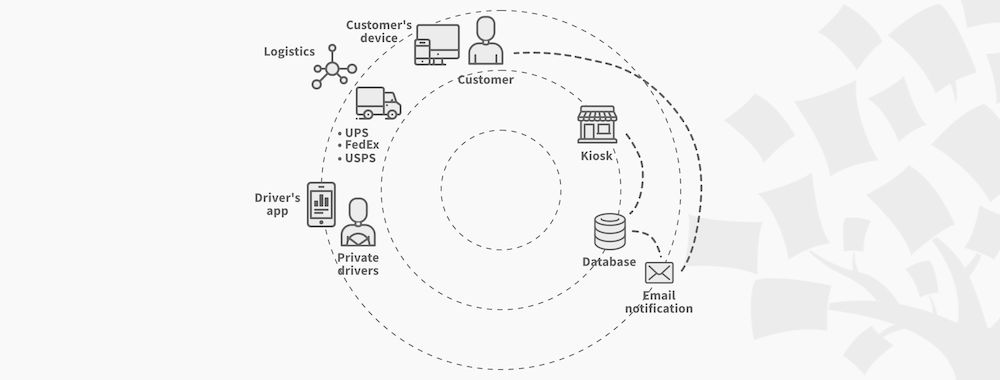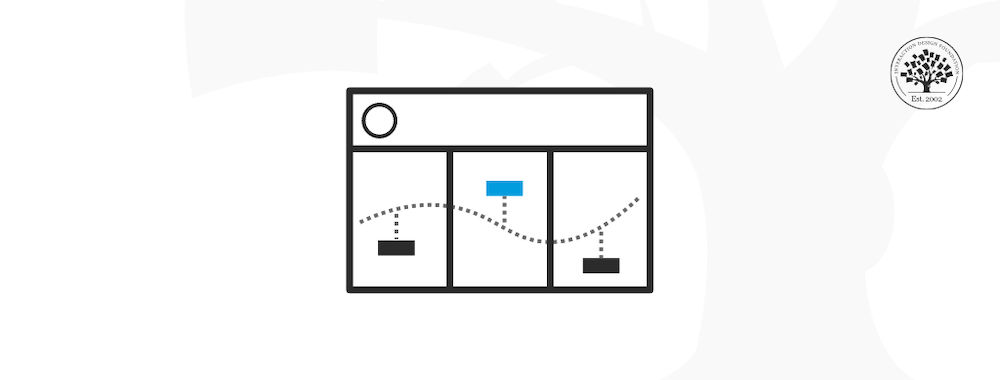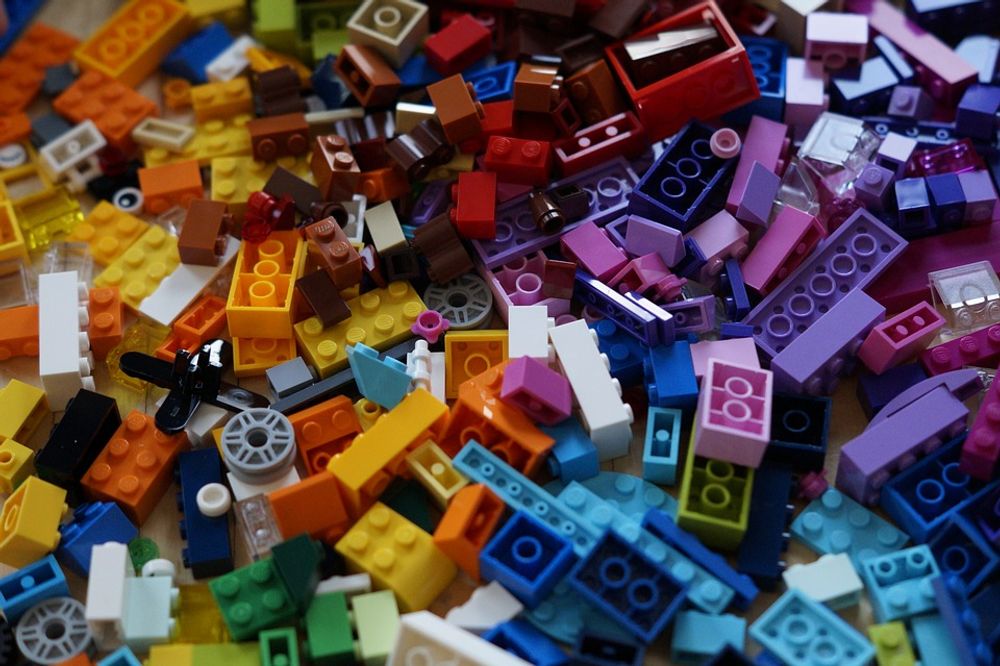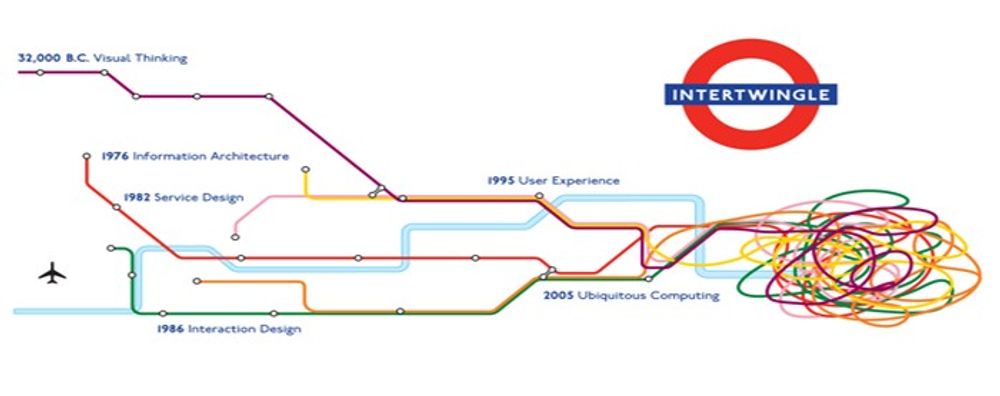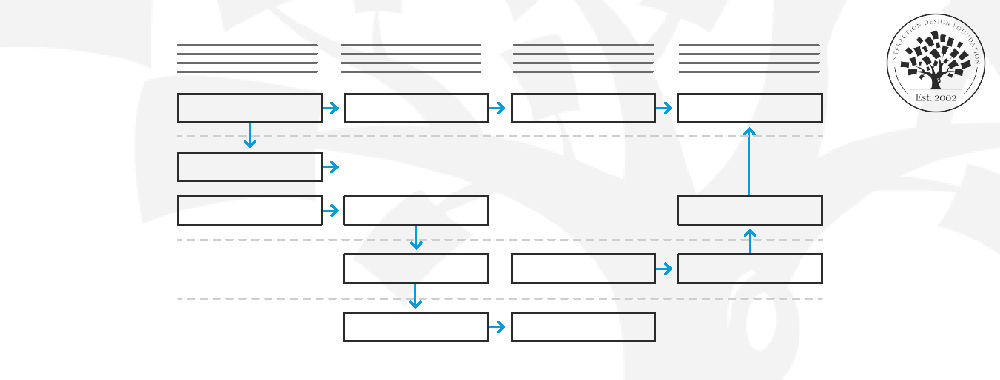A user-centered design process maps the current state of the world and envisions preferred future states in the form of new computational artifacts. Service design relies on a similar process with some important differences. Most importantly, a service design process results in a system, a service concept and a strategy for transitioning from the current system to the preferred system. Unlike UCD and UX, which focus almost exclusively on the user, service designers discover solutions at the intersection of the service provider’s and customer’s needs. As a result, a service design gets expressed through a series of models that serve as a description of what a service is, how it meets the needs of customers and how it fulfills the goals and initiatives of multiple stakeholders (Goldstein et al., 2002).
You can get an overview of a typical service design process in this video where Frank explains the overall stages.
Three models commonly used to map the current state and investigate a preferred future for service design are a stakeholder model, a service blueprint and a customer journey map. A stakeholder model details the total set of relationships, generally from the perspective of a single stakeholder within the service system. A service blueprint maps a customer’s trajectory through a service, often to complete a task, such as buying a home (Bitner et al., 2008). It reveals the sequence of interactions the customer experiences across a collective set of touchpoints and then documents the elements and resources the customer interacts with and also the backstage business resources that must coordinate to provide the service. A customer journey map also maps a trajectory through a service, but with a focus on the customer’s motivations, experiences and emotions (Samadzadeh, 2015). The goal with all of these models is to represent elements in a way that rearrangement or alteration reveals changes to the whole system (Sevaldson, 2011). Products, services, people and relationships are represented in totality.
Service design models and plans become the basis for coordination of a service design team. Models are used to keep all team members in agreement, to develop scenarios and concepts and to consider implications of new products, services and systems that are introduced into the service ecology. They support a solution that is developed iteratively and holistically, evaluated and refined over time and put forth in the world with confidence.
In many ways, service design and design practice in HCI are quite similar. Both start with background research to understand the current state and to identify the needs of customers and users. Service design deviates a bit in that it also works to identify the strategic initiatives of the service providers. UCD, UX and service design all involve prototyping. With service design, this often includes construction or simulation of specific environments where customers and service providers interact with each other. One key difference here is that service designers often develop the scripts used by human service providers. Service design teams create the tools and technology being used and the workflow supporting the service. HCI work, in contrast, generally only addresses the computational device and the interface used by the customers and the service providers. HCI and UX generally do not design scripts detailing how people should carry out their work.
To reduce the risk of deploying services that fail both in terms of the desired customer experience and the service provider’s ability to perform a service, service design teams will prototype their service design, iteratively improving the design in order to reduce or eliminate risks. When prototyping, design teams assess and refine their designs focusing on how customers understand the service solution, how the design fulfills a customer need and how the service creates value for both the customer and the provider (Polaine, Løvlie and Reason, 2013). Service prototyping often starts with needs validation, where initial service concepts are evaluated by framing them around a customer’s expressed or latent needs. It then takes the form of iterative prototypes, where more and more detail is added to understand how the service unfolds in a physical and social context, and what resources and touchpoints are needed to deliver it. Often, an experience prototype or user enactment—a built-out prototype with the goal of sampling social interaction around the service—is used to assess a proposed service (Bucheneau and Fulton Suri, 2000; Odom et al., 2012).
References and Where to Learn More
Bitner, M. J., Ostrom, A. L., & Morgan, F. N. (2008). Service blueprinting: a practical technique for service innovation. California management review, 50(3), 66-94.
Buchenau, Marion, and Jane Fulton Suri. "Experience prototyping." In Proceedings of the 3rd conference on Designing interactive systems: processes, practices, methods, and techniques, pp. 424-433. ACM, 2000.
Goldstein, Susan Meyer, Robert Johnston, JoAnn Duffy, and Jay Rao. "The service concept: the missing link in service design research?" Journal of Operations management 20, no. 2 (2002): 121-134.
Odom, William, John Zimmerman, Scott Davidoff, Jodi Forlizzi, Anind K. Dey, and Min Kyung Lee. "A fieldwork of the future with user enactments." In Proceedings of the Designing Interactive Systems Conference, pp. 338-347. ACM, 2012.
Polaine, A., Løvlie, L., & Reason, B. (2013). Service design. From Implementation to Practice. New York: Rosenfeld Media.
Samadzadeh, Shahrzad. 2015.
Customer Journey Map or Service Blueprint?Sevaldson, B. (2011). “GIGA-Mapping: Visualisation for complexity and systems thinking in design.” Nordes, (4).
Image
Hero Illustration: © Interaction Design Foundation, CC BY-NC-SA 3.0
